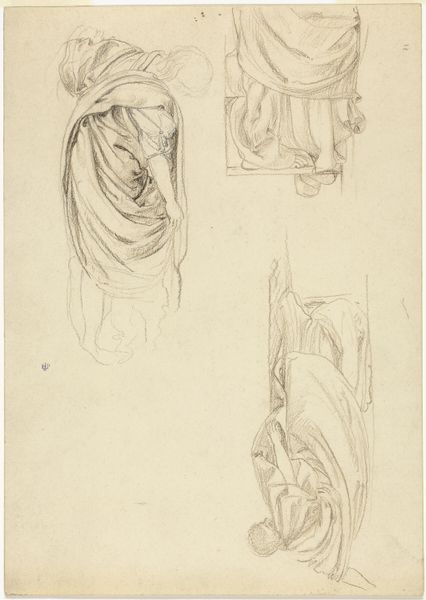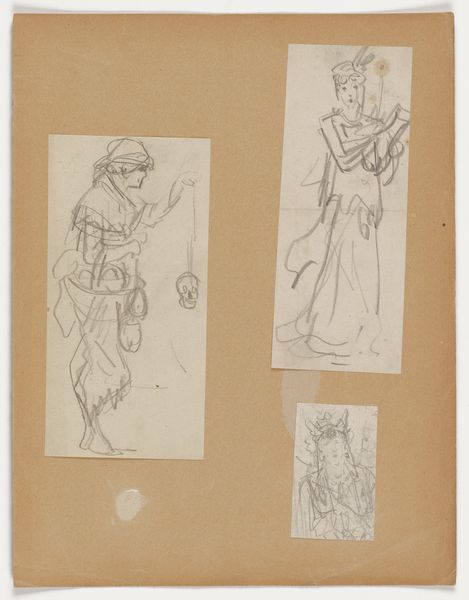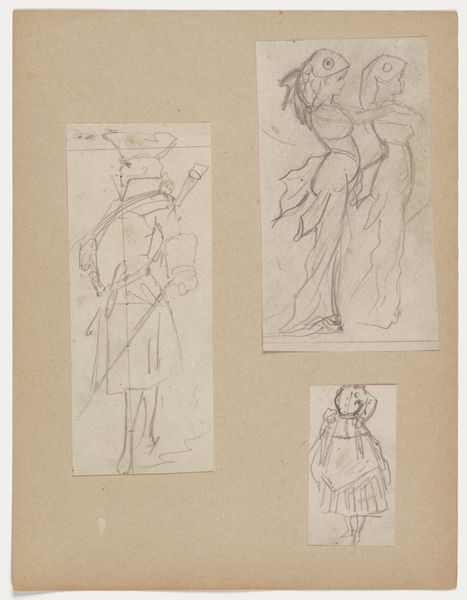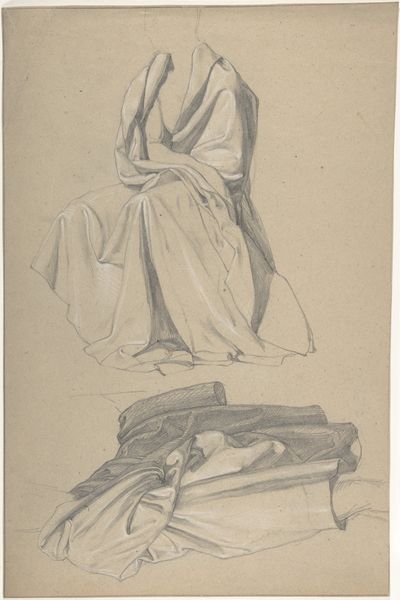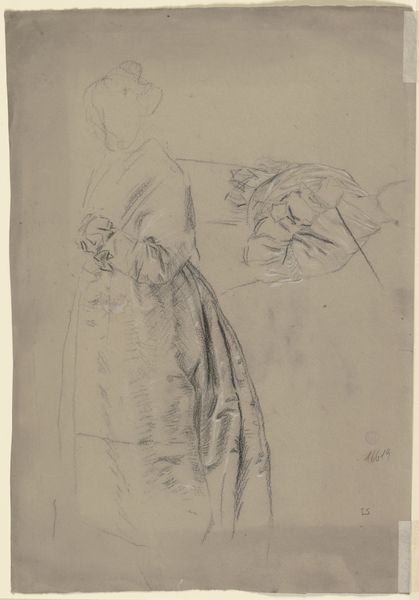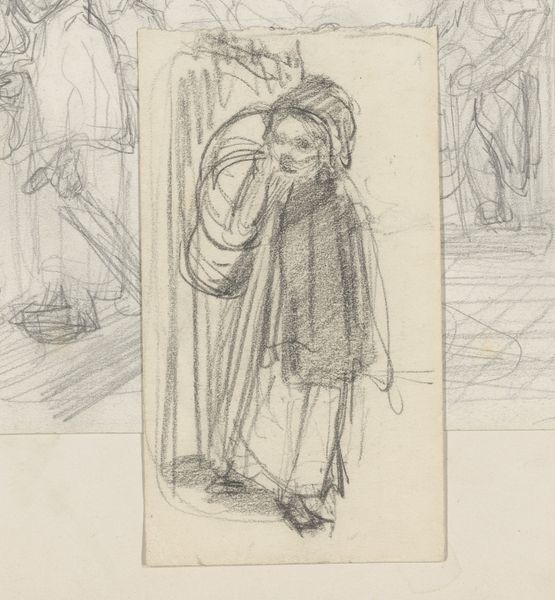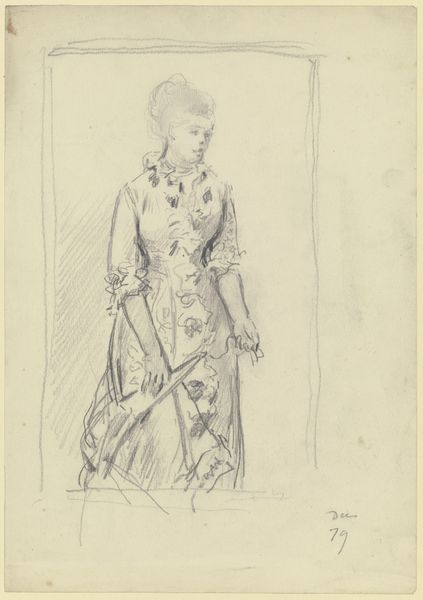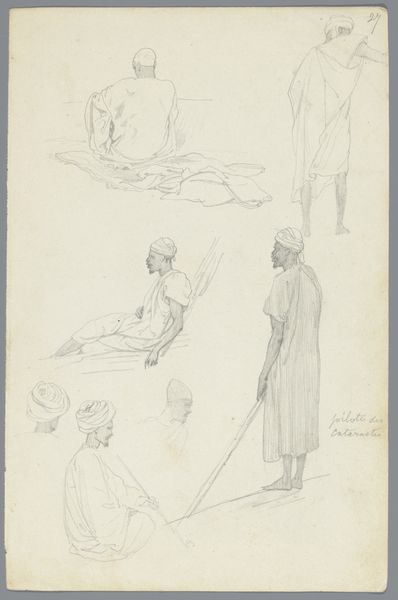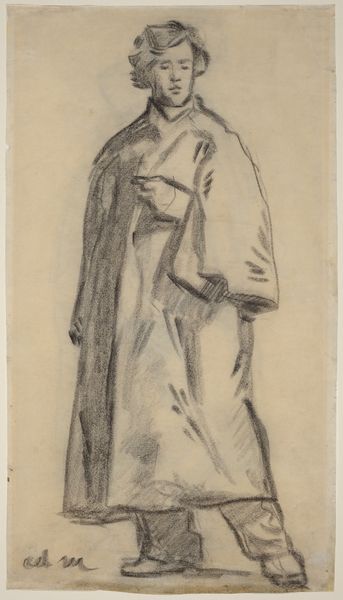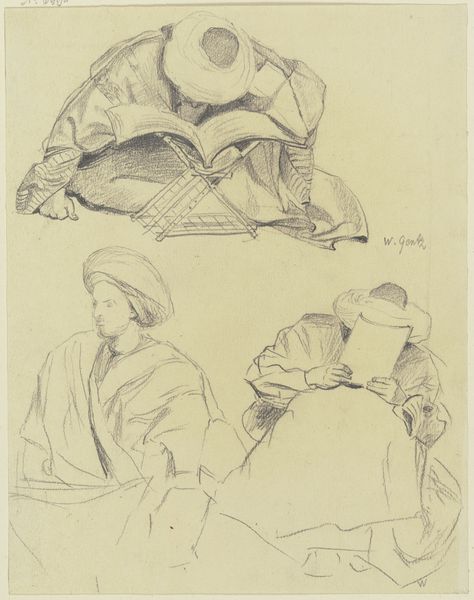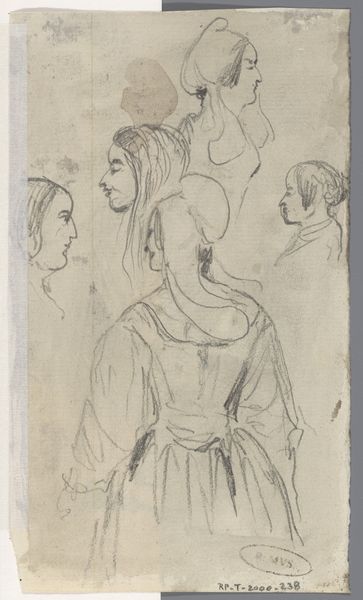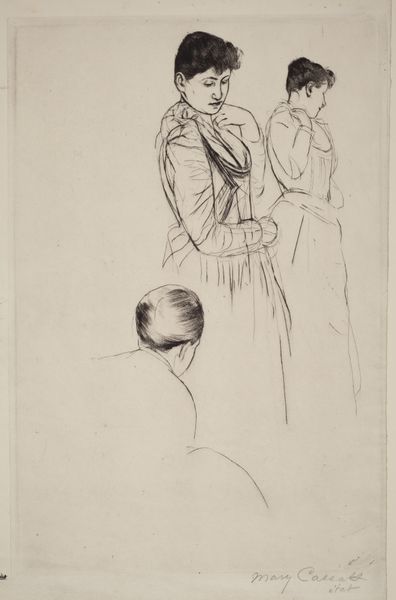
Dimensions: height 533 mm, width 282 mm
Copyright: Rijks Museum: Open Domain
Editor: This is "Two Men from the Dutch East Indies with Trays," a pencil drawing by Nicolaas van der Waay, around 1898. It has the intimacy of a personal sketchbook. What strikes me is the artist's focus on capturing their likeness and their clothing. How do you interpret this work? Curator: Considering this drawing within its historical context is crucial. Van der Waay made this sketch during a time of intense Dutch colonial activity in what is now Indonesia. These aren't just anonymous figures; they're individuals participating in a complex system of power and representation. How does the artist’s choice of medium - a quick pencil sketch - play into this, do you think? Editor: Perhaps the sketch format makes it feel more immediate and less formal than a painted portrait? Almost as though the artist sought an unmediated representation of the subjects. Curator: Exactly. But we must also acknowledge that even sketches are never neutral. By focusing on certain details - the intricate patterns of their sarongs, their headwear - the artist inevitably shapes how they are perceived. How do you think this piece might be received differently by someone from the Dutch East Indies versus someone from the Netherlands at that time? Editor: Someone from the Dutch East Indies may recognize their cultural identity, and another might resent it being objectified through the colonial gaze. In contrast, someone in the Netherlands might have seen it as an exotic image reinforcing colonial narratives of the time. Curator: Precisely. Recognizing these varied perspectives, informed by identity and history, allows us to critically engage with the artwork's complex layers of meaning and open more doors for conversation and understanding. Editor: Absolutely, seeing it as more than just a simple sketch really adds depth. It’s made me think more critically about the colonial context. Curator: Me too. By engaging with art in this way, we recognize that every artwork is a product of its time, carrying the weight of history and power dynamics within it.
Comments
No comments
Be the first to comment and join the conversation on the ultimate creative platform.
